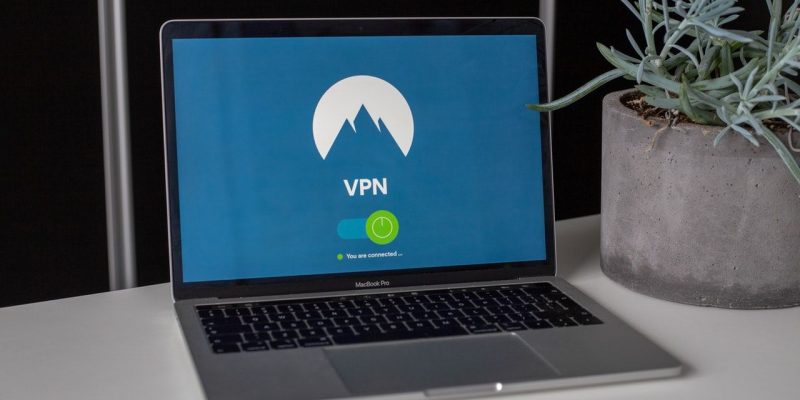The cybercrime industry is estimated to be worth $1 trillion annually and keeps growing by the day. For this reason, online privacy has become a contagious topic, with unprotected servers being prone to attacks by malware and spyware.
Fortunately, modern solutions such as advanced computer antivirus security and VPNs have been developed to mitigate online threats.
A VPN creates a personalized server, which masks your connection to various websites. It acts as an intermediate between your computer and other servers by encrypting your traffic. The result is that the destination server will see the traffic coming from your VPN server rather than your computer. This review NordVPN takes a look at one of the most reputable VPN providers globally.
Well, having a VPN connection might sound like the best way forward until you consider the hefty subscription fees on the most reliable VPNs. That is why this article discusses how you can develop your VPN server at home to save a few bucks on subscriptions.
First, let’s have a look at some perks of having a homemade VPN system than a subscription model;
Affordable
If you can spare some coins to acquire the necessary hardware (a compatible router), the rest of the process is pocket-friendly. Nonetheless, it would pay if you purchase a compatible router that comes with predesigned coding for homemade VPNs and it should be placed indoors and not like security camera in enclosed patio.
Enhanced privacy
VPN service providers encrypt your traffic through their systems and their network service providers, which doesn’t fully guarantee your privacy. However, a homemade VPN cuts out the ‘middleman aspect’ as your traffic data flow directly between you and your service provider.
Stay connected away from home
Setting up a VPN server on your home network gives you a remote access to all home devices connected to the network.
Before you start setting up a personalized VPN server, here are some essential VPN properties that you will have to forgo.
Cannot access to restricted content
A VPN server relies on dozens of other servers in various regions of the globe to access limited-access content. However, homemade VPN servers have no such links and are a huge limitation if you want to mask your IP address location.
Setting up your VPN server
When it comes to server hosting options, you can easily get spoilt for choice. The popular choice with most home VPN owners is purchasing a VPN-enabled router. Most modern routers come with preinstalled features; hence, they require zero costs of instalment, while others give you an option of installing a VPN adapter.
Alternatively, if you are on a lean budget, you can use a cloud hosting service provider such as Amazon Web Services or Microsoft Azure. Although costlier, this option allows you to choose a city on which your data centre will be based.
Setting up a VPN on a home router
Assuming you have purchased a new VPN enabled router, the following steps will allow you to set up a home VPN:
- Open a browser on your computer and enter your router’s Local Access Network (LAN) and click search. The search result bar will lead you to your server’s home page.
- Enter the router’s username and password.
- Select settings > advanced settings> VPN Service
- Click the ‘Enable’ tab on the VPN Service page.
- Allow users to access relevant internet pages through the VPN
- Finally, click ‘APPLY.’
Your router is now connected to a home VPN; however, you have to configure similar settings into your computer system which acts as the server. Follow the following steps.
- Access the router’s control panel to download configuration files for your VPN client(computer).
- Unzip the files and transfer them onto the VPN client folder where your system can access them.
- Connect to your network.
Setting up own VPN server in the cloud
Cloud-based VPN servers are more expensive but come with enhanced features than router VPNs. You can easily set up a cloud-based own VPN server through the following steps.
- Select a cloud hosting provider. Google Cloud Platform, AWS, and Azure are big money cloud service providers and have some of the market’s best services.
- After selecting a server, create an account and verify your identity. We will use Google Cloud Platform for illustration purposes, although the procedure works on any server.
- Once logged in, open the Google console, which will provide a remote environment for your VPN set up through its Google shell feature.
- Download Algo (VPN set up requirements) into the Google shell. Unpack the download by typing “git clone” https://github.com/trailofbits/algo.git and press enter
- Use “cd algo” to change directories into where Algo was downloaded.
- Create a project and a service account that will run and execute necessary commands to install your VPN commands;
- Type and or paste each of the commands below onto your project’s station and press ENTER to execute.
- Run Sudo apt install -y –no-install-recommends python3-virtualenv to install a Python tool required for Algo to work.
- Paste this command to install Algo’s other dependencies: python3 -m virtualenv –python=”$(command -v python3)” .env && source .env/bin/activate && python3 -m pip install -U pip virtualenv && python3 -m pip install -r requirements.txt. You’ll see lots of output, most of which you can ignore unless you see errors.
- To edit the algo, type “nano config.cfg” and press Enter.
- Press control x to exit after reading all the choices, followed by ‘Y for yes I want to save.’
- Finally, type./algo -e “provider=gce” “gce_credentials_file=$(pwd)/configs/gce.json” to start the setup wizard. And select a name for your server.
Your VPN server is now ready to use, and you can adjust connection suggestions as prompted.
Parting shot
Contracting a VPN service provider has become a costly affair due to an increased demand for cybersecurity services. Luckily, you can set up your VPN server at home or the office and still enjoy world-class protection from spyware and malware. It’s not easy and require a fair degree of technical knowhow. But it can be done.













Comments